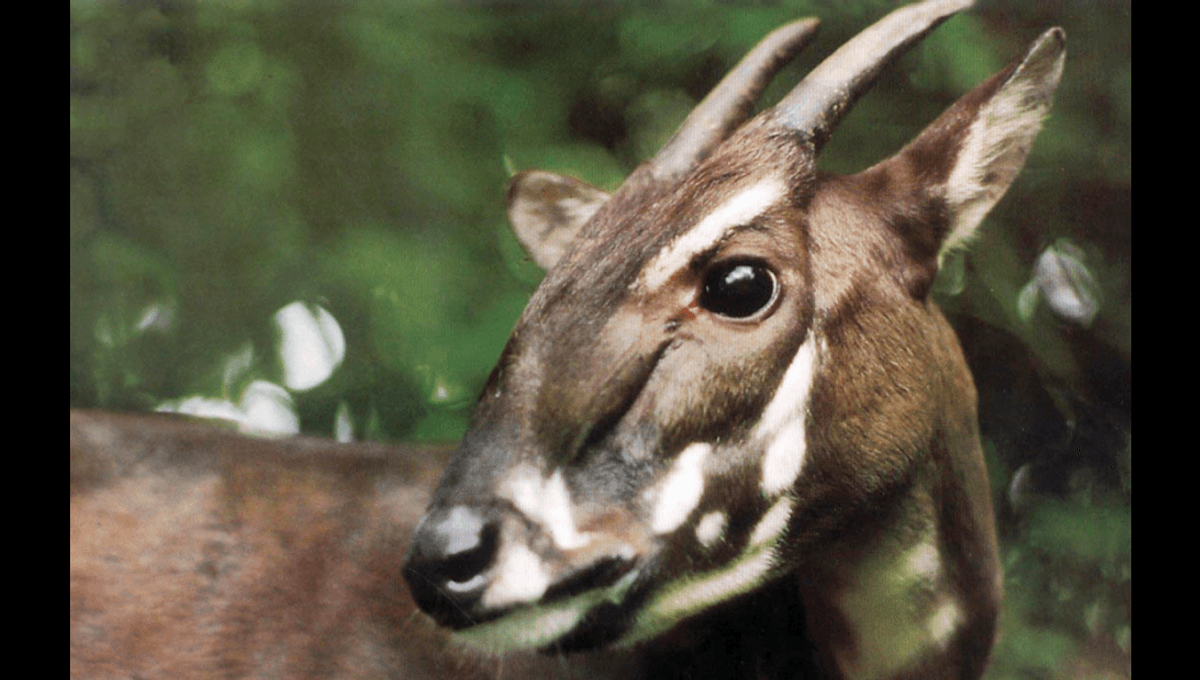
It’s been 22 years since someone last photographed the “Asian unicorn”. Also known as a saola, it was last seen via a camera trap in Quảng Nam province, Vietnam, but nobody’s seen one since.
Proving an absence of something isn’t easy, especially when dealing with elusive animals that occupy remote habitats. So, how do we know when a species is extinct? It takes time, which is why some are hopeful that out there somewhere, saolas still roam the forest.
For Pseudoryx nghetinhensis, as the animal is known to science, the most optimistic estimates say there could be around 100 left in the wild. Others fear it could already be extinct, but they haven’t given up.
“Right now, the existence of live saolas can neither be proven nor disproven,” said Nguyen Quoc Dung from the Forest Inventory and Planning Institute in Vietnam in a release. “The last evidence we have was from 2013, when one was captured on a camera trap. But given the remoteness of its habitat, it is extremely difficult to say for sure whether there are still a few out there. There are some signs and indications that still give us hope.”
A recent paper discovered that saolas are actually split into two populations that exhibit considerable genetic differences. That split happened around 5,000 to 20,000 years ago, and it offers us an opportunity: if we could mix the populations back together again, we might just be able to restore some of the genetic diversity that’s been lost as their numbers have plummeted.
“If we can bring together at least a dozen saolas – ideally a mix from both populations – to form the foundation of a future population, our models show the species would have a decent chance of long-term survival,” said Rasmus Heller, senior author of the study and Associate Professor from the Department of Biology at the University of Copenhagen. “But it hinges on actually locating some individuals and starting a breeding program. That has worked before when species were on the brink of extinction.”
So, the hunt is on to find 12 saolas, but how do you find a species scientists have been looking for (largely unsuccessfully) since the 1990s? One place you can turn to is leeches.
Yes, leeches. Those blood-sucking invertebrates you sometimes find after a nice swim in a pond. Leeches, as well as the general environment, can be a treasure trove of environmental DNA, something we’re increasingly using in conservation research.
Having successfully genetically mapped the saola genome earlier this year, we know what we’re searching for. Should we be out of luck and saolas are already extinct, it’s possible that we still have another option available to us that could return them to the wild.
“Our results could in theory be used if we were ever to succeed in bringing the saola back through genetic de-extinction technologies, which are a hot topic right now,” said Heller. “In that case, our new insights into saola genetic variation could make a huge difference in creating a viable population.”
Finding living, breathing saolas would, of course, be the easier of the two outcomes, and the team hasn’t given up hope of finding one. Still, they’ve got their work cut out.
“Scientists have been searching for saolas since the 1990s, and it’s only gotten harder since then, because there were more of them back then,” said Heller. “I’m not overly optimistic, I have to admit – but I really hope the saola is still out there.”
Source Link: Finding The Last Saolas: The Hunt For One Of The World’s Rarest Mammals Is On